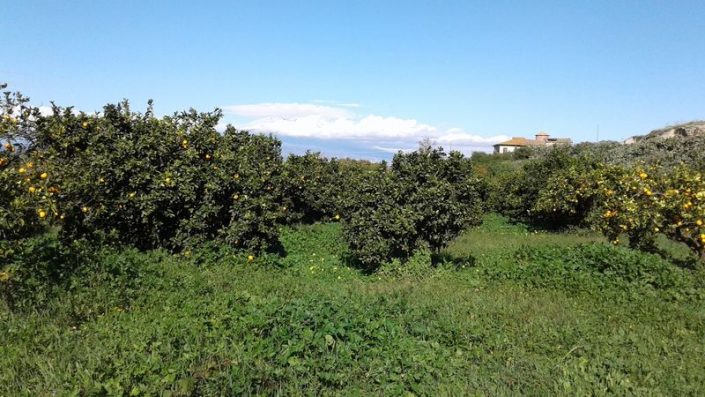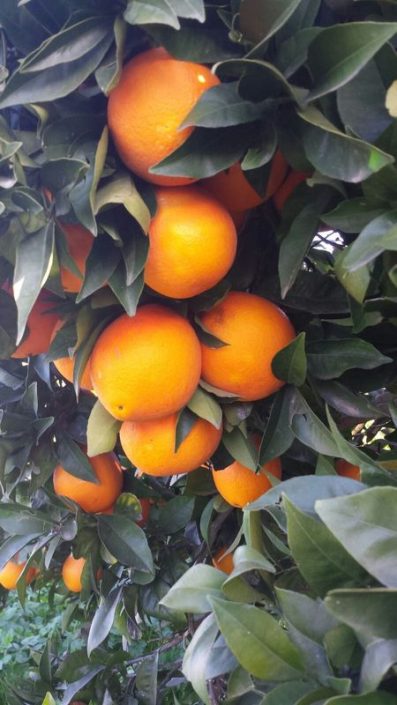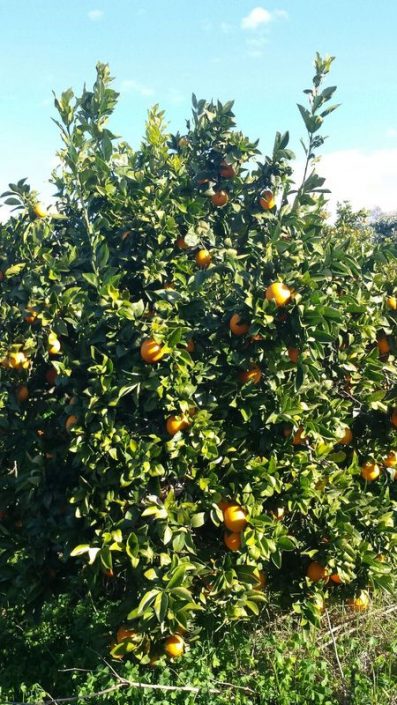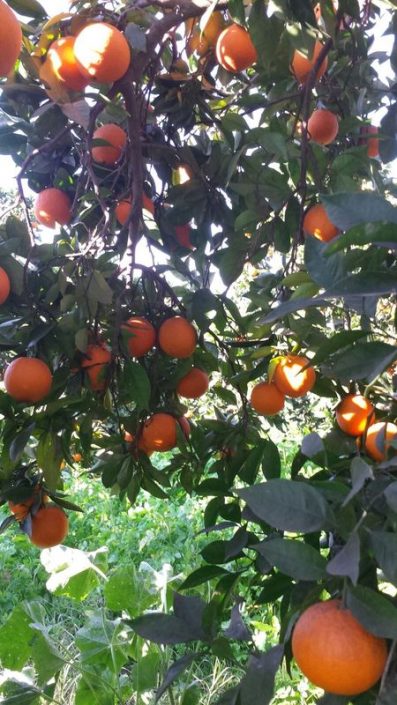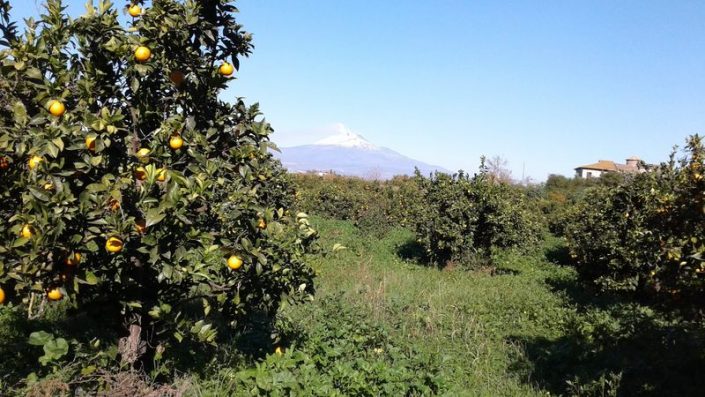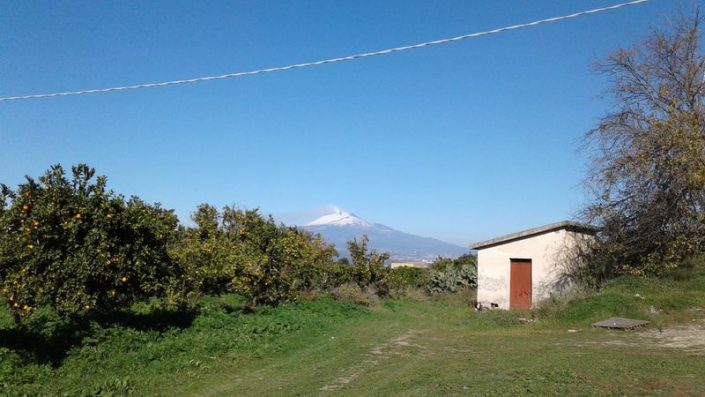Our citrus fruits:
- navelina oranges from end November to end January;
- moro oranges from early January to end February;
- tarocco oranges from early January to end February;
- ovale oranges from early May to the beginning of June;
- valencia oranges from early May to the beginning of June.
The bergamots are available from end November to end January.
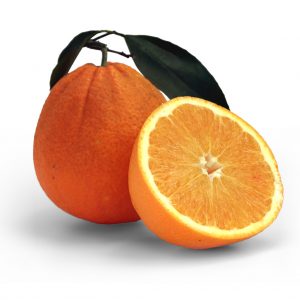
The navelina orange
The navelina orange has a medium-thick, dark-orange skin.
It is very sweet, moderately juicy and seedless.
It is produced on a large scale in California and Spain, but the one grown in Sicily has a much more intense flavor.
The navelina is characterized by the presence of a small orange in the underlying part.
The navelinas we provide are particularly good.
The moro orange
The moro orange has a red flesh, rather small and spherical, with a very thin and reddish skin.
The pulp is dark red and quite aromatic due to the high content of anthocyanins.
It is seedless and easy to peel. It also has a high yield in juice.
The abundant production of red pigment is characteristic of oranges produced in eastern Sicily.
In particular it is favored by the peculiarities of the soil, together with the strong temperature variations between day and night due to the snows of Etna.
Anthocyanins, which give red oranges their exclusive pigmentation, have different therapeutic properties: they perform an effective antioxidant action, they protect the walls of blood vessels.
On the other hand, due to the presence of anthocyanins, red oranges are less durable than light oranges.
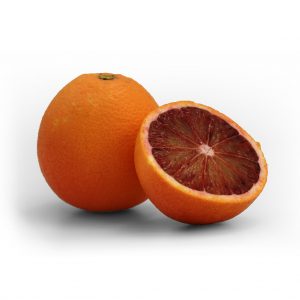
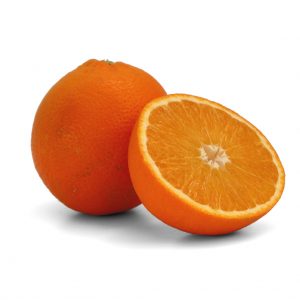
The tarocco orange
The tarocco orange is an orange with red flesh, with a very thin skin.
It is seedless and easy to peel.
The pulp is orange-red in color, juicy, with medium sugar and acidity.
It has a content of anthocyanins (a red pigment that has an effective antioxidant action) high, although lower than the Moro one.
Despite this, it is the most requested variety for its ideal organoleptic characteristics.
The oval orange
The oval orange has a medium-thick yellow-orange skin.
The pulp is orange-blond and seedless, and has a very high yield of juice.
It is not very sweet, but has a delicate taste and is thirst-quenching.
The oval orange also has the characteristic of being more durable than the other types of orange.
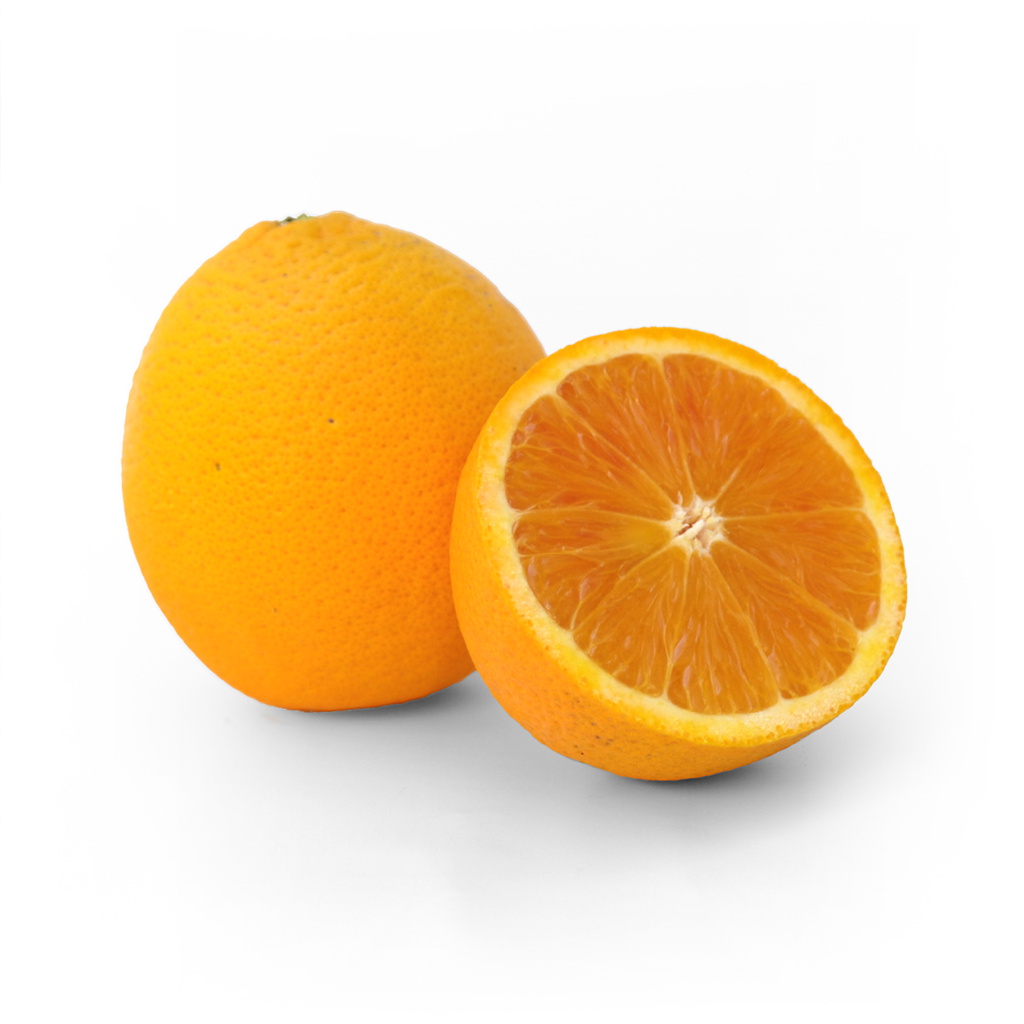
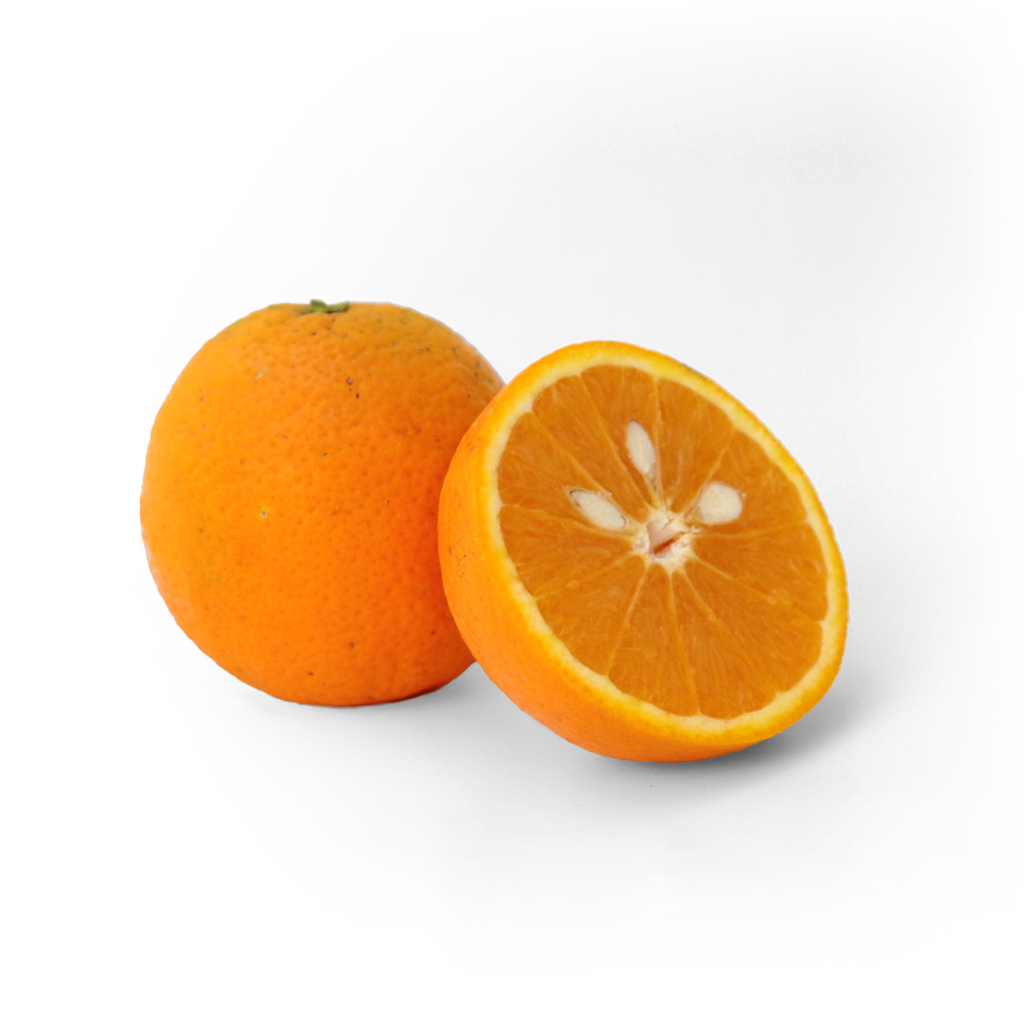
The valencia orange
The valencia orange has a rather light, slightly papillated orange peel and a high yield in juice.
It is normally preferred over the oval (the variety available in the same period).
Like the oval, it is very resistant, but has a slightly higher sugar content and a slightly more intense taste. It is also easier to peel.
The bergamot
DOP et BIO product (click here), directly from our partner in Reggio Calabria (Azienda Agricola Bruna Familiari).
The cultivation of bergamot is mainly localized in Calabria and, in particular, in the province of Reggio Calabria.
Only a small part is grown in Africa (Malì, Guinea, Ivory Coast and Cameroon) and South America (Argentina and Brazil).
Bergamot is a citrus fruit whose extracts are used successfully to treat hypercholesterolemia.
The beneficial properties of bergamot are due to the polyphenols present in citrus and could also be exploited for patients with cardiovascular disease so as to reduce the doses of drugs taken for the heart.
A study recently conducted by the University of Calabria has identified a component, present only in bergamot juice, able to inhibit the production of cholesterol in the blood, which causes formation on the walls of the arteries of plaques and the obstruction of blood vessels (atherosclerosis).
To learn more, please click here.
Recommended use: 3 orange + 1 bergamot juiced, or 3/4 apple juice + 1/4 bergamot juice (indicated against cholesterol).
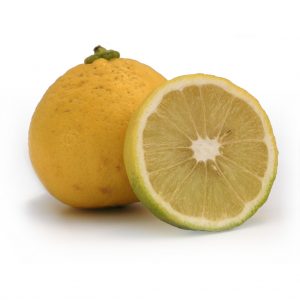
Our citrus grove
The firm
Organic oranges from Sicily
From the tree, directly to your home.
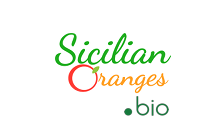
Azienda agricola Sicilian Oranges .bio srls
Organic sicilian oranges
Via Androne, 73 – 95124 – Catania
P.I. IT05879670874 - R.E.A. CT443176
info@sicilianoranges.com







